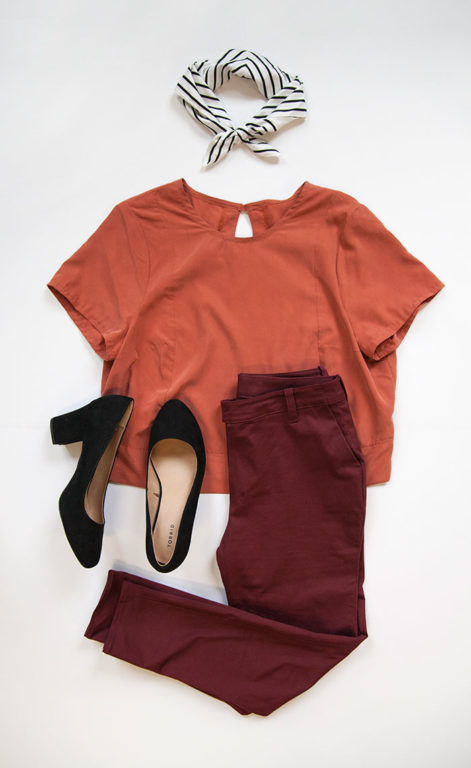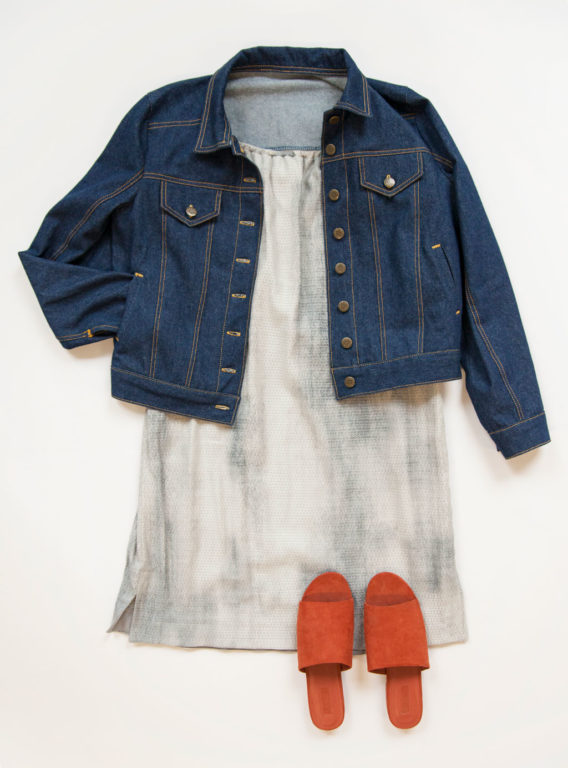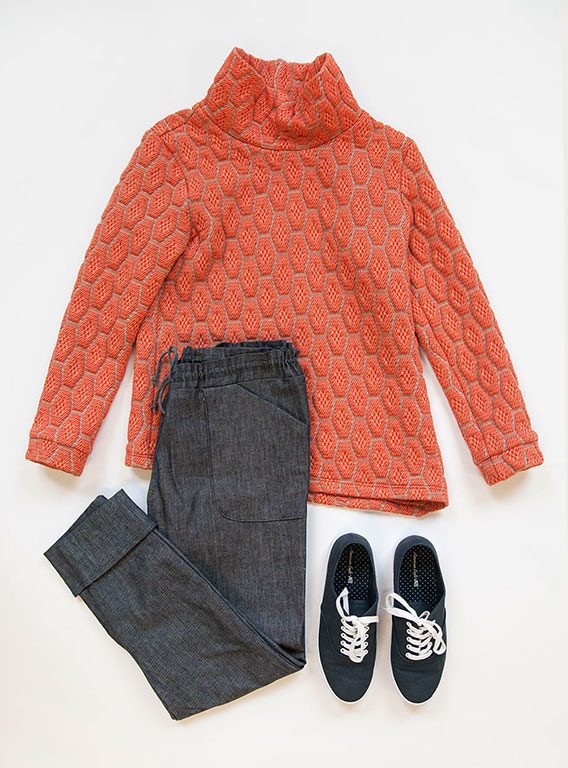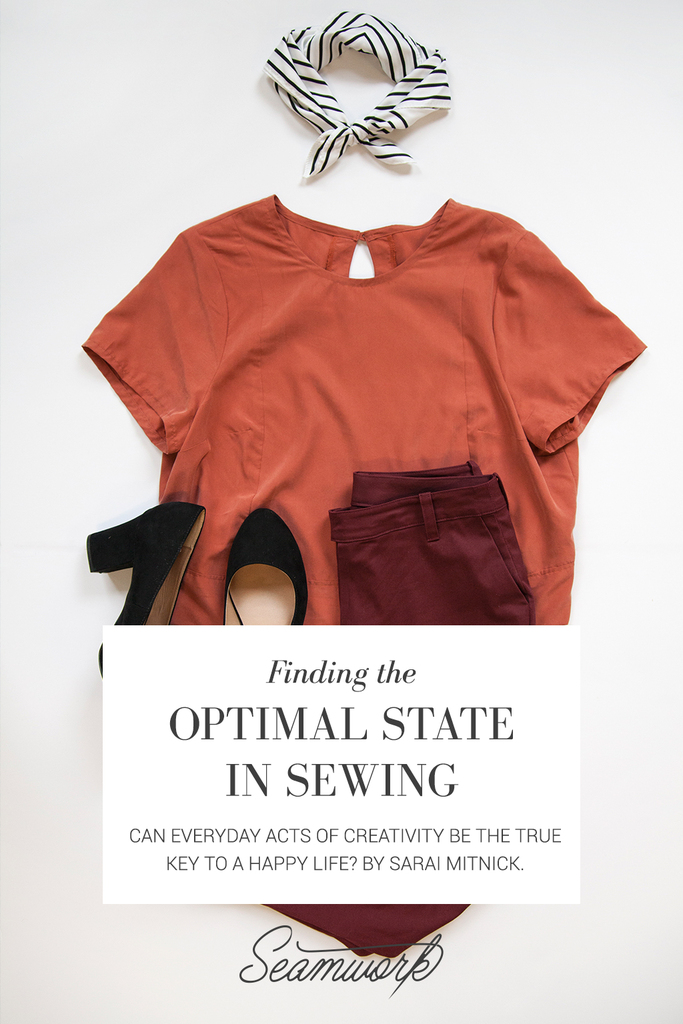It is impossible to talk about creative practice without discussing the concept of flow. In issue 20 of Seamwork, Jessica Yen explored this idea. This month, we wanted to revisit flow to discuss how finding this state can increase your happiness in life and behind the sewing machine.
Have you ever walked into your sewing space to work on a project, and suddenly looked up to realize that six hours have gone by? Perhaps you forgot to eat any food or refill your water glass. Maybe everyone in your household went to bed hours ago. But you were so focused on what you were working on, time seemed to go by in a flash.
Psychologist Mihaly Csikszentmihalyi explores this state of being in his influential book, Flow. If you’ve ever had that experience of being so absorbed in what you’re doing that you lost all sense of time, you probably recognize that intensely fulfilling state.
According to Csikszentmihalyi, flow is a condition of optimal experience, a state of consciousness in which anxieties fade and you can become completely absorbed in an activity in the present moment. When people experience flow, they are actually at their happiest. They lose the sense of themselves and their troubles, and feel a part of something bigger.
In fact, Csikszentmihalyi believes flow to be key to true happiness. In a world in which we’re told that only external achievments can make us happy—a prestigious job, more money, a new car—we’ve found that none of those things truly affects our overall happiness beyond a basic standard of living. Instead, it is the state of our mind that brings real fulfillment. Flow is the optimal state of mind.

You might have felt this state at many times in your life. Most athletes report it when going into competition. If you like to draw or paint, it’s very likely you’ve found flow at some point while concentrating on your subject. Musicians feel it when they play at their best. And of course, many of us have felt it while in the middle of creative activities like sewing.
So what draws all of these disparate activities together? What creates this wonderful state of focused consciousness?
Flow requires you to create balance between challenge and skill. If the challenge is too high and your skills do not match, it creates a feeling of anxiety. If you’ve ever known someone who dove into sewing for the first time by attempting to make, for example, a tailored suit, only to get frustrated and give up completely, you can recognize how impossible it would be to achieve flow when you set impossible expectations.
On the other hand, if the challenge is too small, the result might be apathy or boredom. Or, you might find it pleasurable or relaxing, but it doesn’t engage you and make you feel fulfilled. It’s nice, but passive.
The key is to give yourself just the right amount of challenge to grow your skills. As you continuously learn, you can add more and more challenge. The state of flow becomes stronger and stronger as you head toward mastery. Just as the olympic athlete is more capable of putting herself into a state of flow than the beginner, the practice of continual challenge and improvement can lead you to more easily access flow.
Creating this state for yourself does more than create positive experiences that make you happy. The focus on something more than yourself helps to dissipate insecurities and gives you a greater sense of confidence. You begin to value yourself more, and gain greater self-knowledge.


Csikszentmihalyi offers many insights that you could apply to your sewing or any other creative practice to achieve flow more often:
1. Choose challenging, but realistic goals. Match the challenge to your abilities so that you are neither bored nor frustrated. And if you do find a task too challenging, recognize it so you can adjust your expectations to the right level next time—not too high, not too low.
2. Give yourself time and space. To get into flow, you need to be able to focus. Shut the door and allow sufficient time.
3. Set real goals. Goals lend order to your mind. When you set clear goals that you can achieve, you immediately feel better. If you haven’t picked a sewing goal, try one out! Even if you don’t achieve it, just having a goal will help.
4. Find a way to get feedback as you progress. Share your makes with a buddy, or with the Seamwork community on Instagram. Or, just write down your progress. Whatever gives you the feeling of accomplishment will do.
5. Recognize flow. When you’ve found that state of growing your skills at just the right pace, you’ll feel great. Celebrate that wonderfully creative feeling, and you’ll learn to get back to it more easily.
It can sometimes feel like everyday acts of creativity like sewing a skirt, making a meal, or coding a website are seriously devalued in our culture. They are reduced to meaninglessness at best, and drudgery at worst. Instead, we’re told that the pursuit of more and better stuff is what will make us happy. We’re told it’s the outcome we should focus on, not how we feel, change, and develop. It’s revolutionary to think that the altered state of mind from these creative moments is the true secret to lasting happiness.


